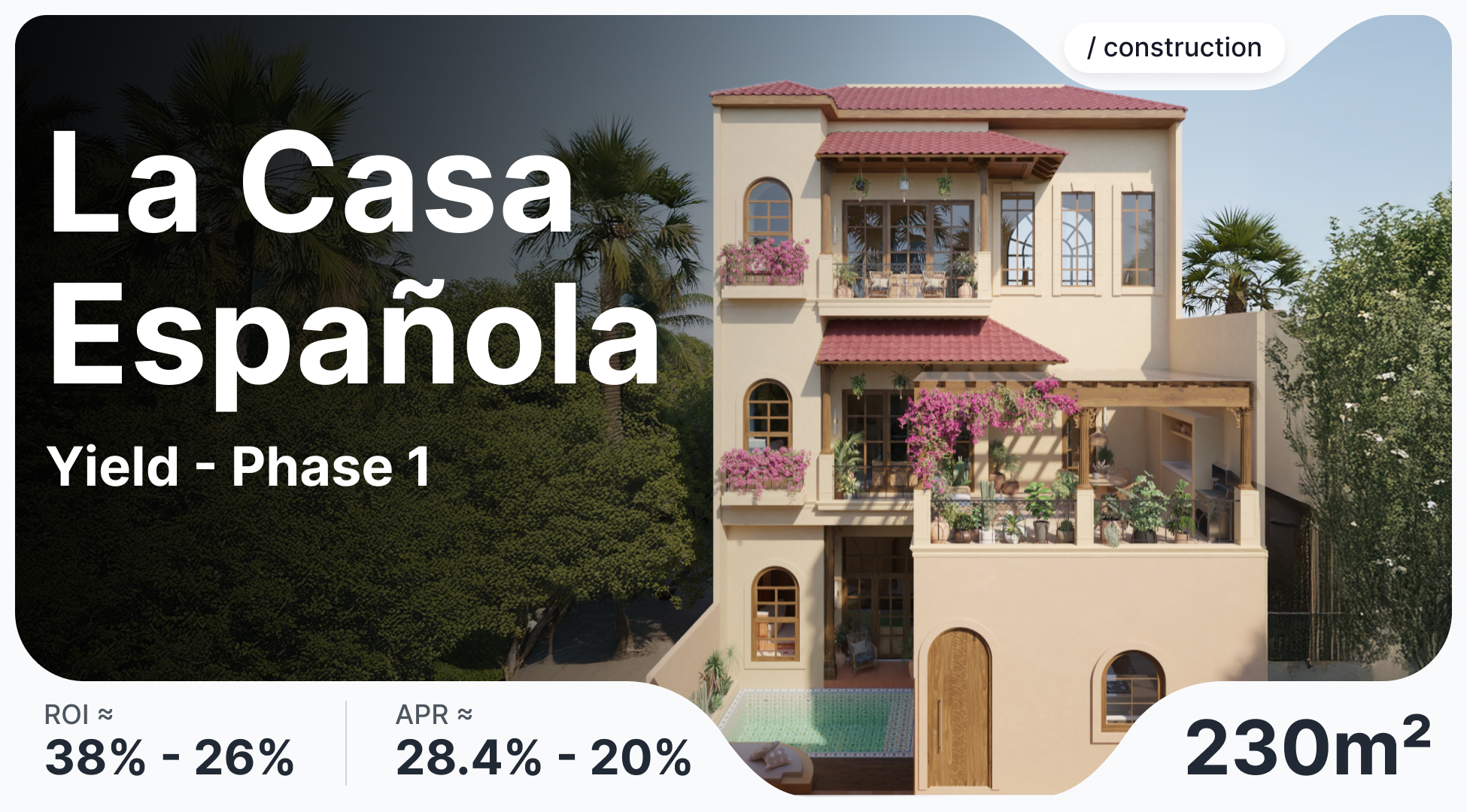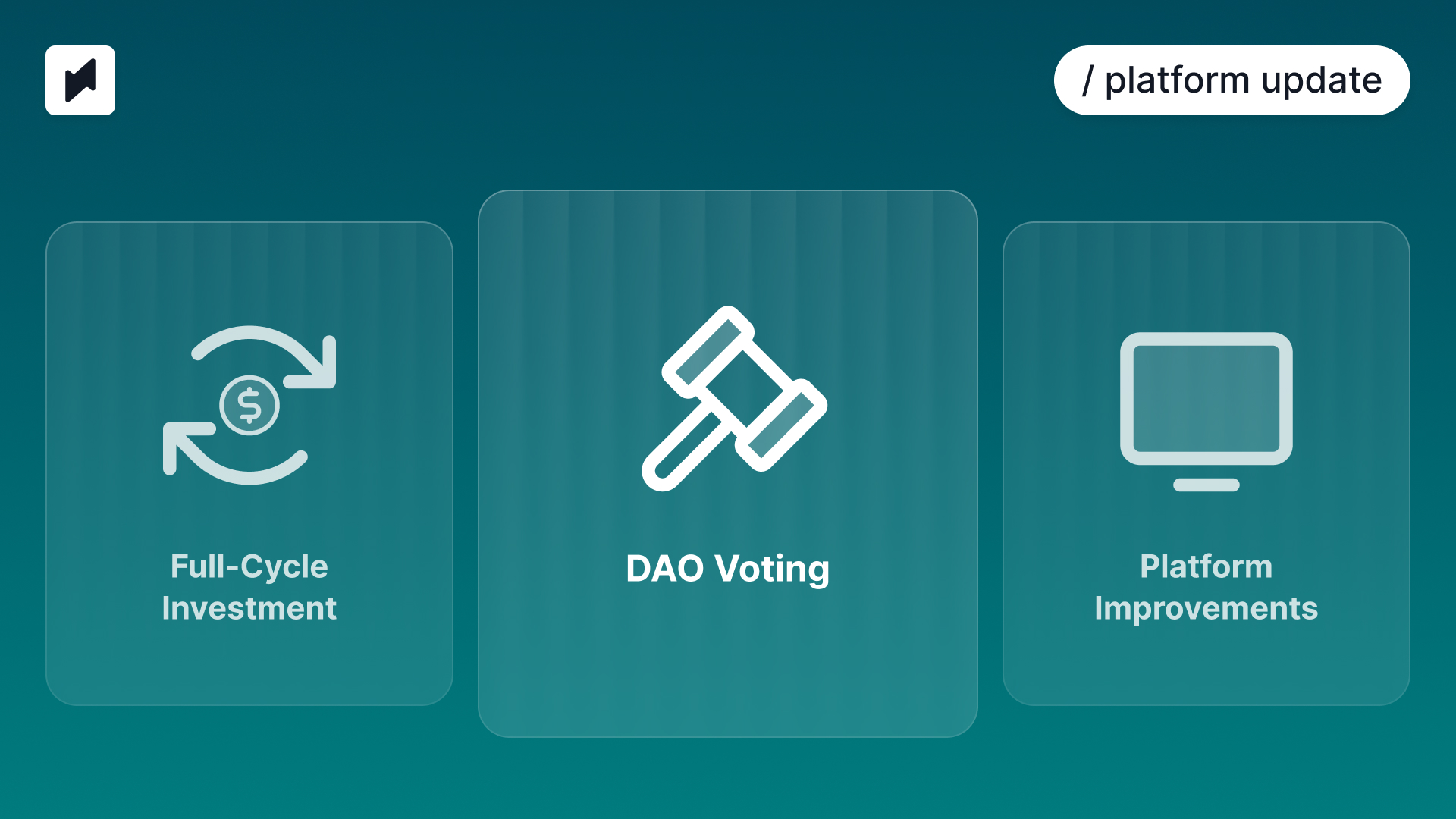Best Investments You Can Make in 2025: RWA, Robots, Longevity, Space
.jpg)
How often do you catch yourself thinking that the world is moving so fast you simply don't have time to study the latest trend before it's already outdated? You dive in only to realize you're too late, or you've invested when it's already overheated. It's a classic dilemma, and trust me—you're not alone in this frustration. We all suffer from it more often than we used to or wished for. That's why predicting trends years in advance has become essential for investment success. We've compiled the top 6 key investment trends that have enough momentum and structural support to remain relevant well beyond a few quarterly reports or fleeting market cycles.
State of Finance and Investments in 2025
Since the onset of Covid in 2019, each year has felt like a watershed moment. And rightfully so—every year has brought surprises that completely upended previous predictions. But 2025, marking a quarter century, offers a particularly elegant numerical milestone to evaluate turning points. Let's briefly examine our current world:
- Artificial General Intelligence achieved in 5 years — 7 out of 10 AI experts expect AGI to arrive within 5 years, meaning AI that surpasses human expertise across all cognitive tasks.
- Up to 10 Trillion worth of financial assets tokenized in 5 years — The RWA market (excluding stablecoins) is projected to grow from its current $20B capitalization to between $3.5T and $10T by 2030.
- 10 billion humanoid robots by 2040 — By 2040, Elon Musk predicts at least 10 billion humanoid robots priced between $20,000 and $25,000.
- Self-sustaining colony on Mars by 2050 — Musk's roadmap for Mars colonization includes a first crewed mission as early as 2029 and a self-sustaining colony by 2050.
These predictions are just the beginning, and it's hard to act out of context. Consider the looming demographic collapse in developed countries or the accelerating trend of deglobalization reformatting global production chains. In this rapidly transforming world of ours, let's examine where to put capital for both protection and growth.
Blockchain and Tokenization of Real World Assets RWA

As of March 2025, the RWA market has surpassed $240 billion, with stablecoins comprising roughly 97% of this total. This means other asset classes combined amount to a mere ~$20 billion – a fraction of their potential. According to data-driven forecasts, the RWA market excluding stablecoins is projected to reach between $3.5 trillion and $10 trillion by 2030, representing a staggering 500-fold increase from today's capitalization. The growth in user adoption is equally impressive: global crypto holders increased 33% from 2023 to 2024, reaching 560 million people (6.8% of the global population), while tokenized RWA holders (excluding stablecoins) number only 272,000 active participants – a market segment that has existed for merely two years.
Several powerful catalysts are driving this transformation:
- First, blockchain technology infrastructure has finally matured to accommodate the tokenization of trillions in financial assets – transaction fees, processing speed, and security across various blockchains have reached critical milestones.
- Second, major institutional players like BlackRock and other top-tier investment firms have shifted from cautious observation to active participation following the 2024 approval of Bitcoin and Ethereum ETFs.
- Third, regulatory frameworks are rapidly clarifying across major jurisdictions, with the U.S. under Trump leading this charge.
- Fourth, the market has evolved beyond "tokenization for tokenization's sake" toward sophisticated products solving specific problems, particularly for historically illiquid assets like real estate.
The simplest entry point remains holding Ethereum itself, as over 82% of non-stablecoin RWAs are built on Ethereum's ecosystem, effectively making ETH an index play on the broader tokenization movement. Another compelling option is exploring tokenized real estate – arguably the most promising asset class for tokenization purposes. Real estate represents the largest and one of the most illiquid financial markets globally, estimated at a massive $650 trillion. The tokenization of just 1% of this market would create a $6 trillion opportunity – 300 times larger than the current combined non-stablecoin RWA market.
Humanoid Robotics: The Next AI Frontier

The past few years have been dominated by AI investments, with companies and individual investors pouring billions into large language models. However, the market now shows signs of oversaturation in this field. It’s time for the next evolutionary step: humanoid robotics. This rapidly emerging sector is gaining momentum with Goldman Sachs projecting that the global humanoid robot market will reach $38 billion by 2035. They estimate approximately 250,000 industrial units will be shipped within five years and consumer adoption will reach one million units annually within a decade. Elon Musk predicts that Tesla's Optimus humanoid project alone could generate more than $10 trillion in revenue.
Several converging factors are accelerating humanoid robotics development:
- The demographic crisis in developed nations—particularly China, which has experienced a population decline for three consecutive years—creates urgent demand for labor alternatives.
- Crucial advancements in AI, battery technology, and materials science have reached the critical thresholds needed for practical humanoid implementation.
- Manufacturing has scaled enough to drastically reduce production costs. Chinese companies like Engine AI released its PM01 model for just $12,175 and Unitree's G1 (capable of executing a roundhouse kick) priced its model at $13,697—considerably below Tesla's projected $20,000-$30,000 Optimus price point.
Unfortunately, there are not many decent options to get in for retail investors. The most obvious play involves buying Tesla stocks, though they seem overpriced even after recent corrections. Alternatives include investing in companies with significant robotics divisions, such as Hyundai, which owns approximately 80% of Boston Dynamics, or consumer electronics manufacturers with strong supply chain expertise like Xiaomi, which could enter the humanoid market at any time. While pure-play options remain scarce in public markets (with Figure AI and most Chinese innovators like Unitree remaining private), component suppliers—particularly those providing specialized motors, sensors, and AI chips like Nvidia that recently unveiled a foundation model for humanoid robots.
Healthcare & Longevity: Extending the Human Timeline

As nations grow more prosperous, birth rates consistently decline. With fewer children being born, another way to avoid rapid population collapse is to extend longevity. The goal isn't merely adding years to life, but keeping the human body vibrant and capable of thinking clearly, moving independently, and continuing meaningful life in their 90s or even 100s. Life expectancy continues its slow upward trajectory – the United Nations projects U.S. average life longevity to reach 89 years by 2100. Not that impressive, but most of these projections are conservative and don't take into account several technological convergences:
- AI-powered drug discovery is reducing development timelines and costs. Companies like Insilico Medicine have demonstrated the ability to identify valuable drug candidates in weeks with the help of AI. They discovered a drug for idiopathic pulmonary fibrosis progressing from concept to human trials in just 30 months instead of the typical 5+ years.
- The cost of whole genome sequencing fell from $3 billion in 2003 to under $200 today. That enables personalized treatments tailored to individual genetic profiles.
- Precision diagnostics using liquid biopsies can now detect dozens of cancers from a simple blood test, enabling intervention years before symptoms appear.
- Senolytic therapies targeting aged "zombie cells" have shown promise in clinical trials, directly addressing fundamental mechanisms of aging.
There are ETFs like the Longevity Thematic ETF (LONG) and stocks of established pharmaceutical companies with strong anti-aging pipelines that can offer conservative entries. Novo Nordisk (maker of Ozempic/Wegovy) demonstrates how metabolic treatments can deliver broader longevity benefits beyond their primary indications. Illumina and Oxford Nanopore provide exposure to genomic medicine.
Space Technology: The Big Dream Returns

The colonization of space captured humanity's imagination throughout the 20th century, then seemingly faded into the background amid more earthbound concerns. But the dream has finally come home—and this time with more than just science fiction narratives. What once seemed centuries away now progresses at an astonishing pace, with multiple technological breakthroughs converging to make space exploration not just feasible but economically viable. Nearly 10,000 active satellites currently orbit Earth, with launch frequency doubling every two years since 2015—a "Moore's Law for space" that shows no signs of slowing.
The are several factors to drive the new space age:
- Drastically falling launch costs: SpaceX's partially reusable Falcon Heavy reduced costs to approximately $1,500 per kilogram from the previous $10,000. The upcoming generation of super-heavy reusable vehicles like SpaceX's Starship promises to drive this down to "hundreds of dollars" per kilogram within 5-10 years.
- Miniaturization and commoditization of satellites: Now even small startups can deploy orbital assets, such as CubeSats to get some valuable data to work with.
- Some innovations are possible only in space: Microgravity environments are opening new possibilities for products like superior semiconductors, optical fibers, and biopharmaceuticals that cannot be produced under Earth's gravity.
The simplest entry point is through space-focused ETFs like the Procure Space ETF (UFO) and SPDR S&P Kensho Final Frontiers ETF (ROKT), which offer exposure to the whole sector. Among publicly traded companies, there are aerospace giants like Lockheed Martin (LMT) and Boeing (BA). SpaceX remains private, but it’s not that hard to get an OTC deal. Also, there are satellite communications companies like AST SpaceMobile (ASTS) and Globalstar (GSAT) that are available to retail investors through regular brokerages.
About Binaryx
Binaryx is a real estate tokenization platform that operates under Wyoming’s 2021 law (W.S. SF0038), turning real estate properties into digital tokens. For each property, Binaryx creates a dedicated LLC in Wyoming that issues tokens on the blockchain. When you buy these tokens, you become a co-owner of the LLC that owns the property, with all ownership rights protected by state law.
Want to learn more about Binaryx? Check out these articles:









-min.jpg)
